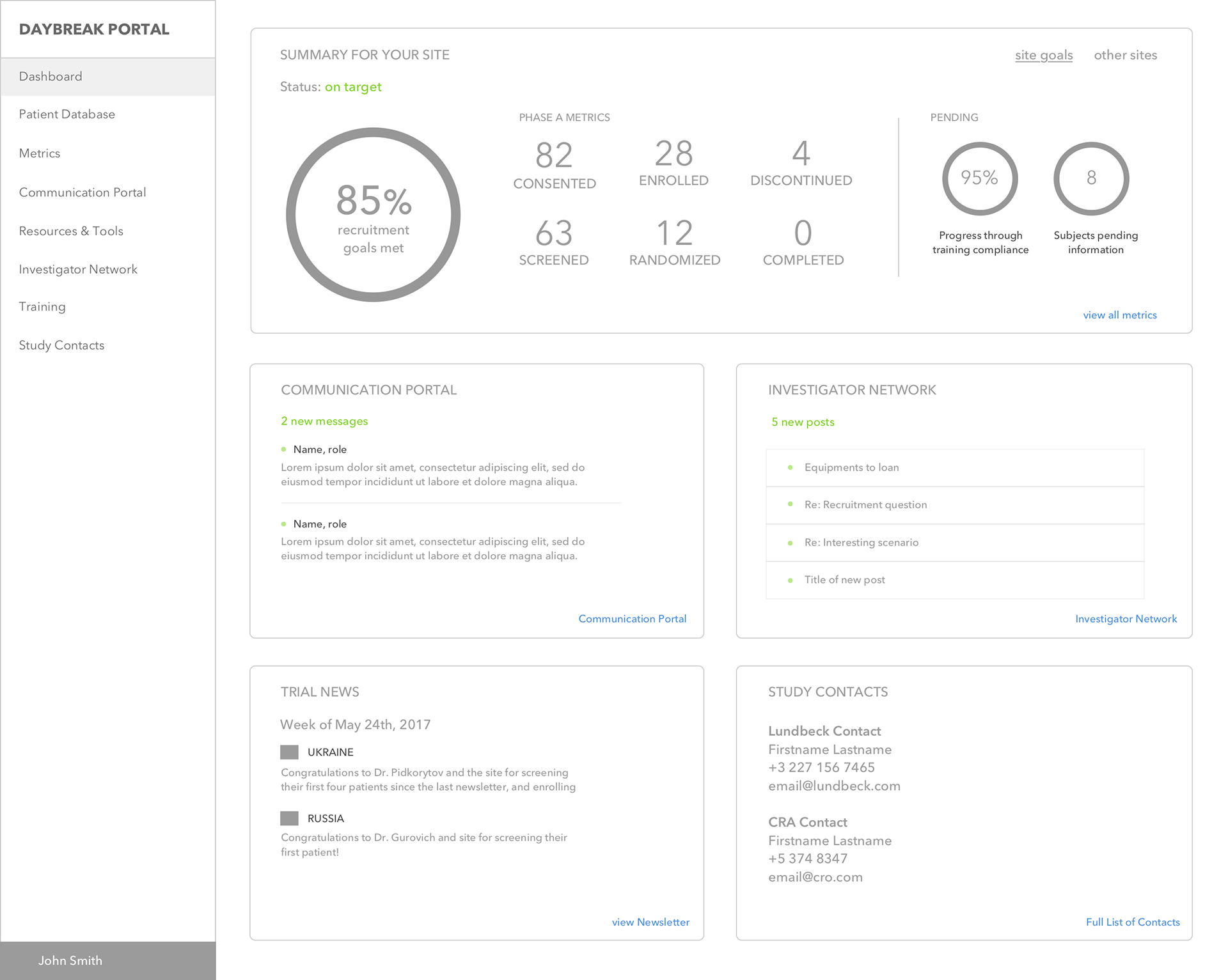A pharmaceutical company hired our team to transform the clinical trial experience and help them become the best in class trial sponsor in the industry.
Role & Team Setup
I team-tagged with another experience designer, and worked with a Design Lead and project manager to form a design unit. The design team of 4 partnered with a work-stream of McKinsey analysts, who performed predictive modeling for the clinical trial solutions.
Approach
We conducted generative design research to identify a set of specific, near-term tactics that can be implemented in the trial to improve recruitment, screening, and patient/HCP engagement.
This led us to concept design. We designed solutions and mapped them onto a journey map, a blueprint, and created prototypes for the digital solutions. This was combined with the predictive modeling created by the McKinsey team of analysts to deliver a comprehensive 'Solutions Toolkit' for improving the clinical trial experience.
We conducted in-depth interviews to gain deep insights into the problem space
In the discovery phase, we ran insights research to deeply understand the problem space and root causes through user research, surveys, and exploratory analysis. We interviewed patients, caregivers, and healthcare providers, then identified and mapped pinpoints and activities. Through affinity diagramming we gained insights on the target users' key goals, needs, pain points, and behavioral attitudes that began to address the problem statement.
Visual stimulus used during research
We used visual prompts or tools to stimulate the conversation during research.
We used visual prompts or tools to stimulate the conversation during research.
The research gave us insights into opportunities in the space. From this, we defined the key features and components of the digital solutions, prior to creation of the functional wireframes.
We created a blueprint map to describe everything that is needed to deliver the service across all touchpoints.
The blueprint map articulates the nature and characteristics of the service, with our recommended solutions embedded on it, from the first to last touchpoint.
We created solutions along three categories:
- Site engagement plans: defining roles and responsibilities for investigator and study coordinator engagement throughout the trial
- Outreach and recruitment: a suite of tools to support sites as they perform outreach
- Patient and caregiver engagement tools: a suite of tools to support sites in creating better patient and caregiver engagement.
We created an experience journey map to outline our proposed solutions at each level of the journey: from trial preparation, trial start-up, through to trial participation.
Similar to the Blueprint, the proposed solutions are mapped along the journey, but the narrative follows a story-telling format, with visuals, high-level descriptions, key elements, and the interaction model (in-person, digital, or phone).
Same image of the experience journey set
We created wireframes, mockups, and prototypes to detail the flow, sitemap, and high-level experience and information map of the solutions.
Wireframe flow of the patient app showing appointment reminders, what to expect on Dr visit, calendar, and clinical trial overview
The solutions shown include:
- An investigator community network: this is a place where HCPs and the client can share best practices, tips, and support; they use the platform to strengthen relationships with investigators. This supports pre-screening screening, improves relationships with sides, connects investigators across trials, and make it easy to access.
- A patient app: this is a companion app for patients and caregivers of patients who are taking the drug. It helps them remember to take their medicine (through reminders and a scheduling tool, to keep track of their Doctor's appointments, to connect with their nurse navigator, and to know what to expect from the clinical trial.


The purpose of these prototypes is to illustrate what the intended experience could be like; thus they are be illustrational and inspirational rather than production-ready designs.
Once the client was aligned on the wireframes, we moved onto the next phase: defining the look and feel.
The final step was to create a visually polished prototype to bring our patient care app and investigator network concepts to life.